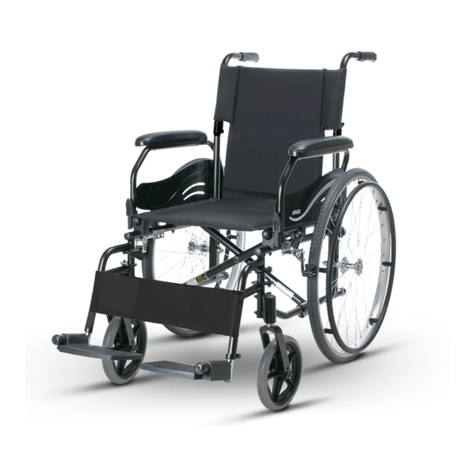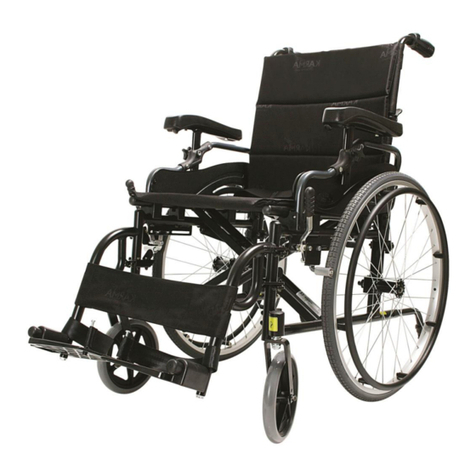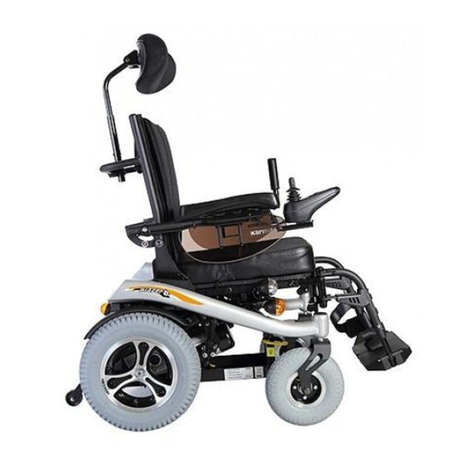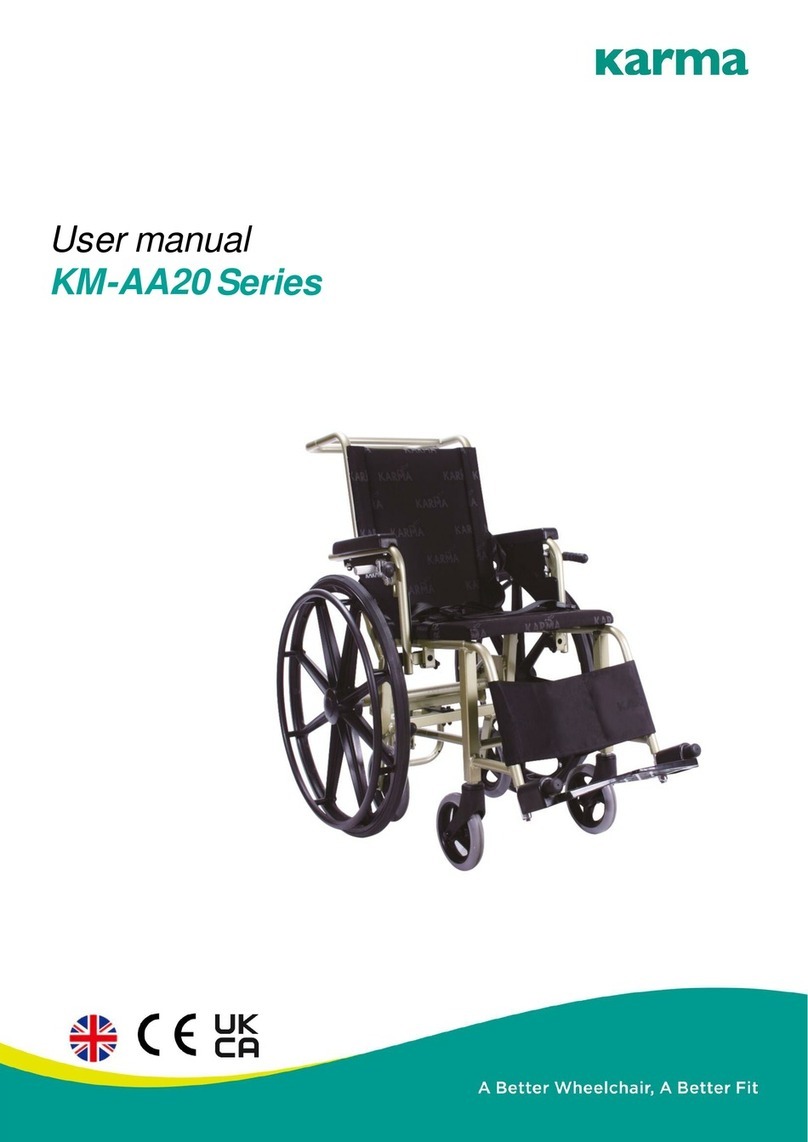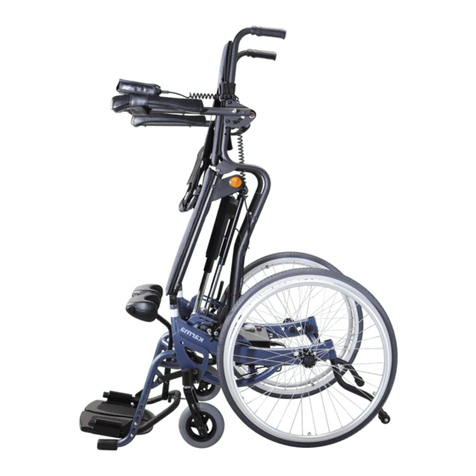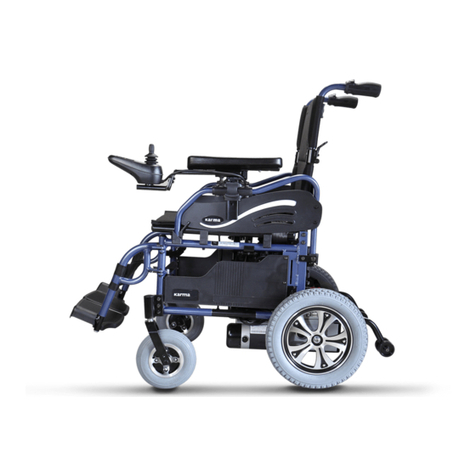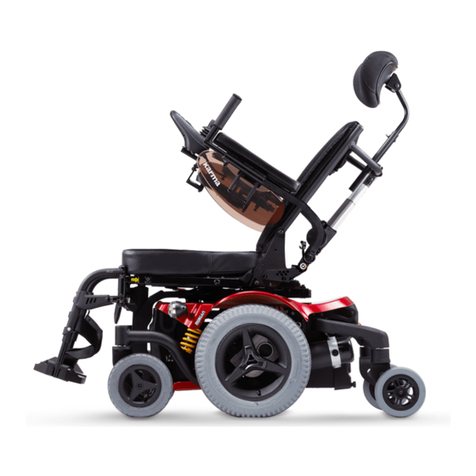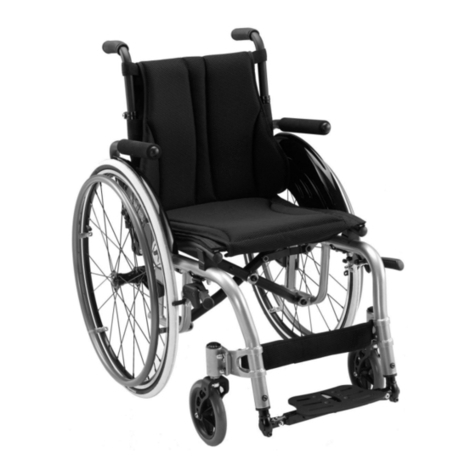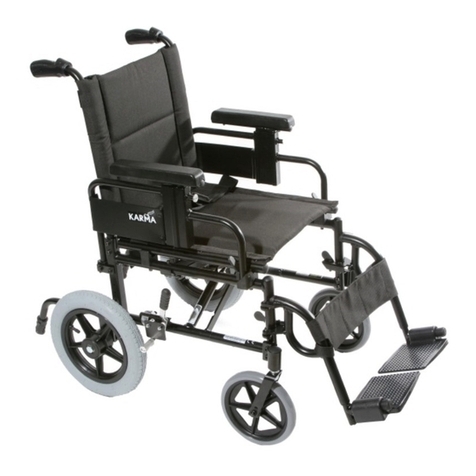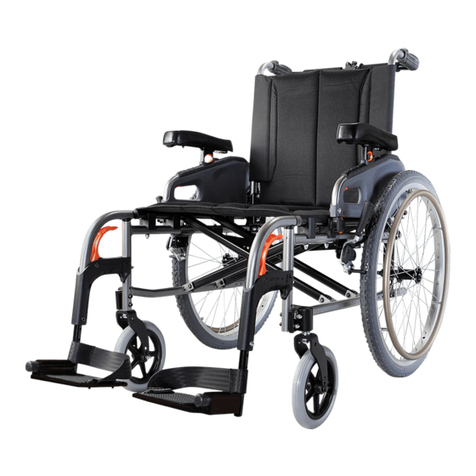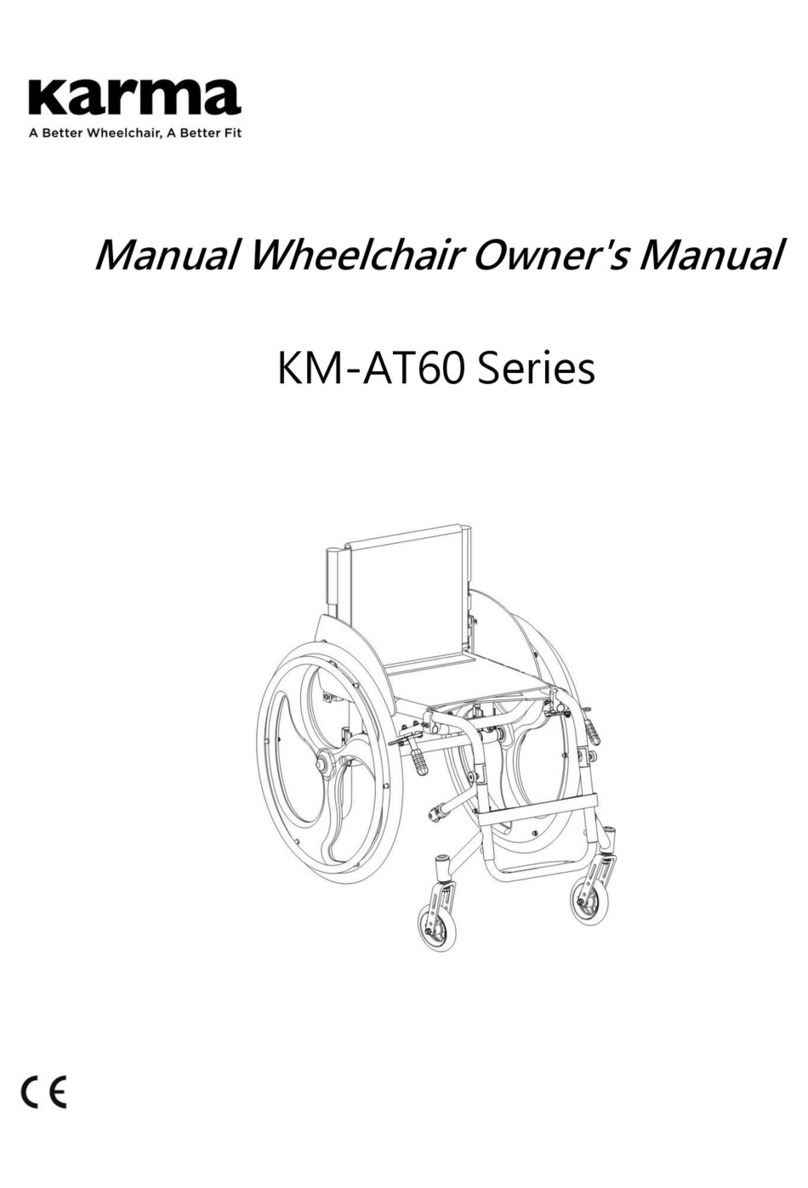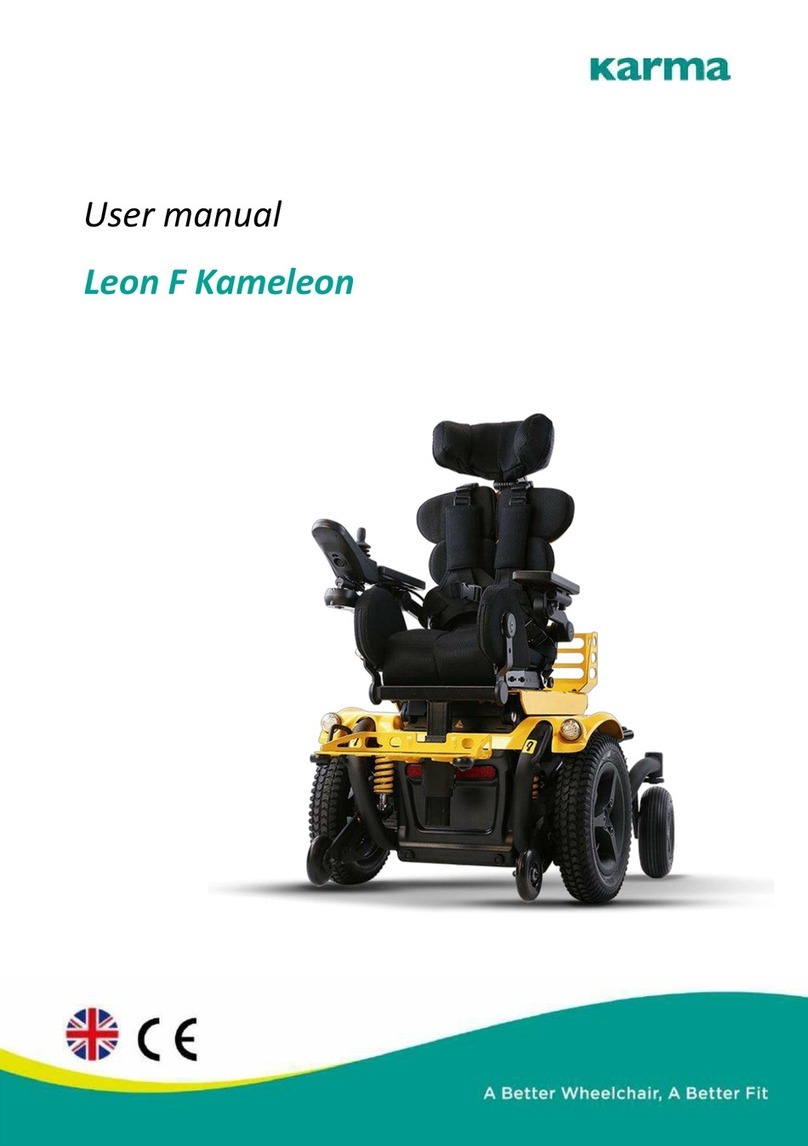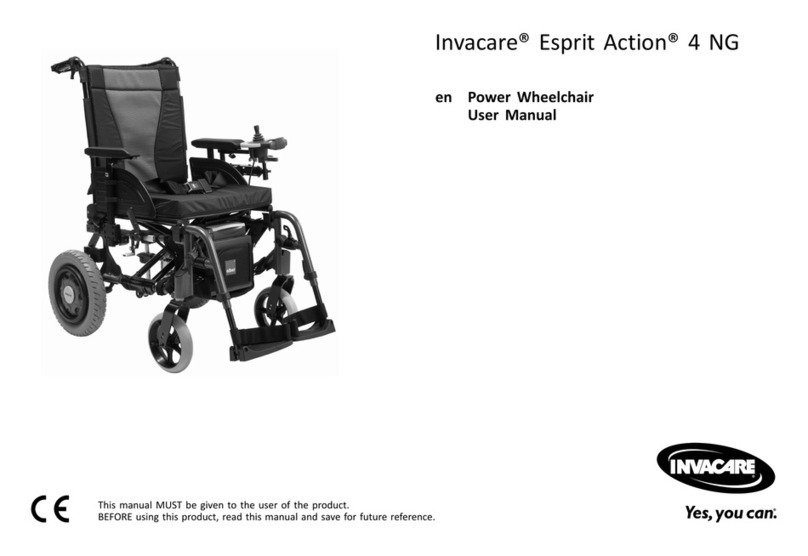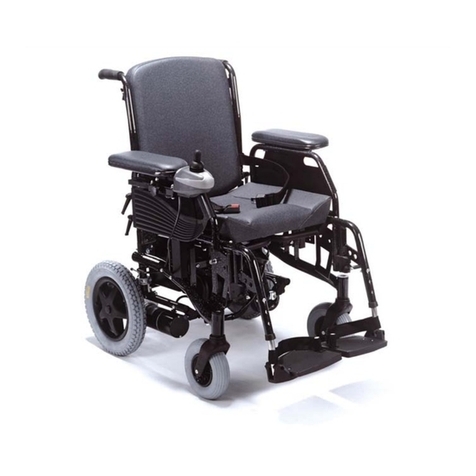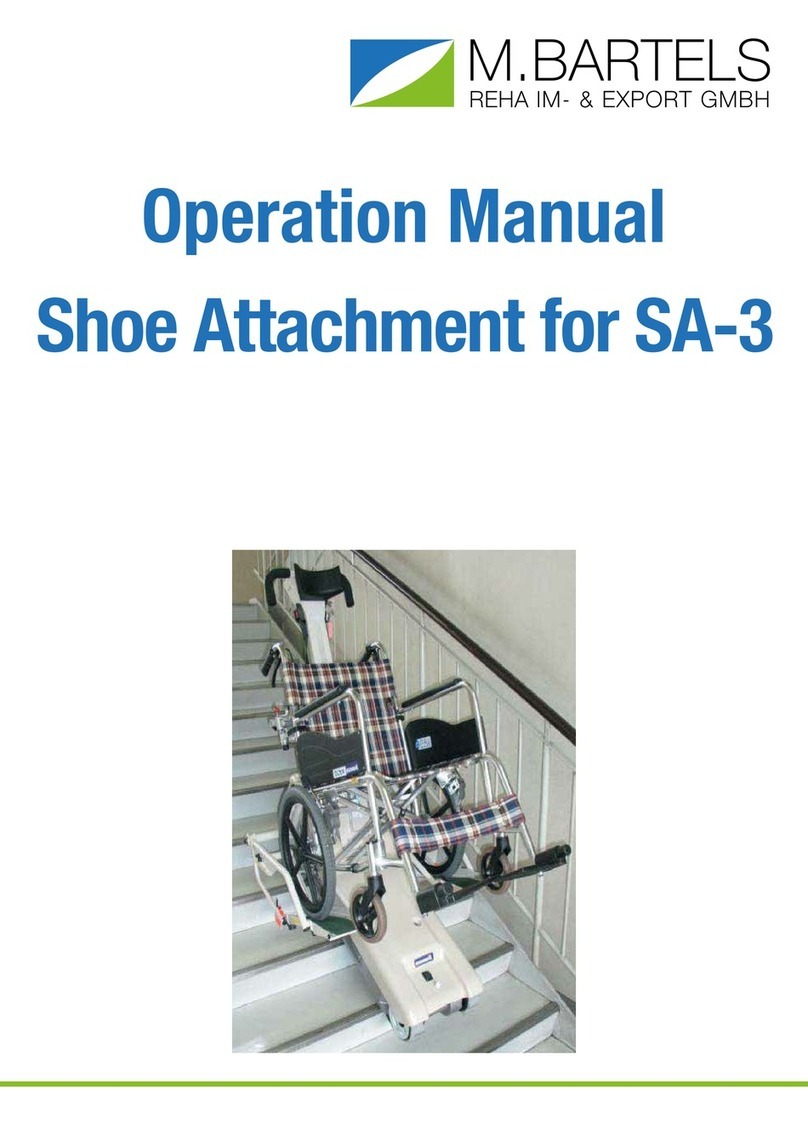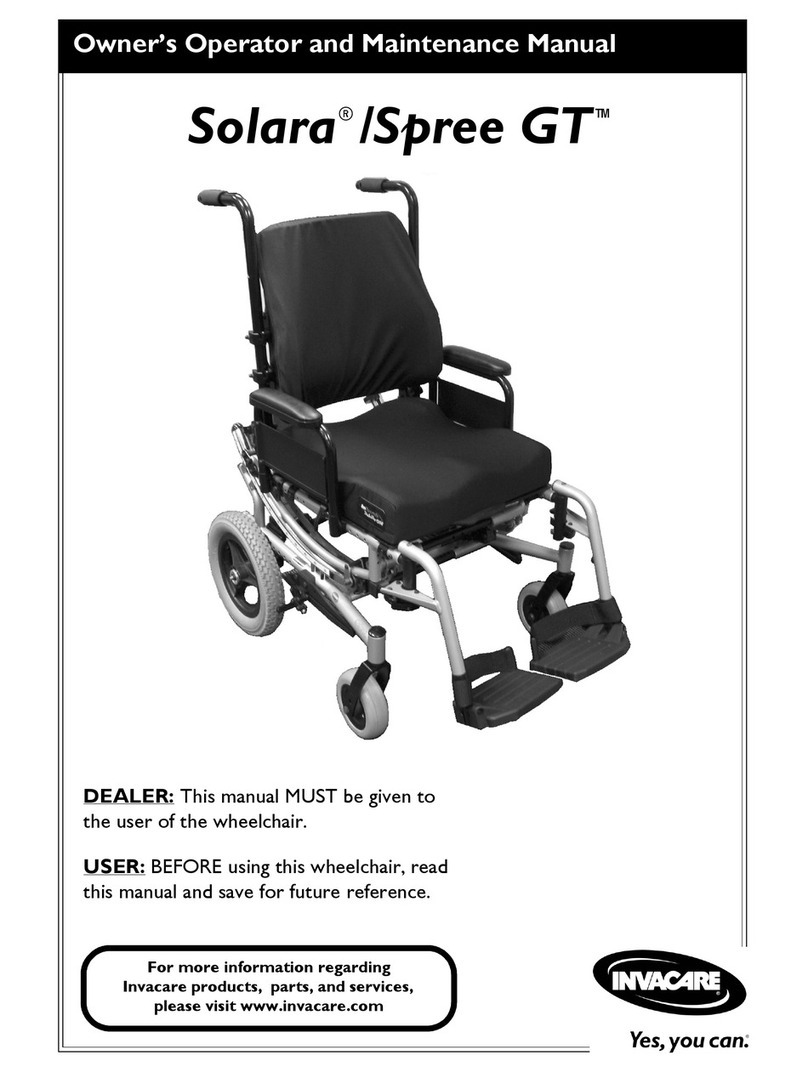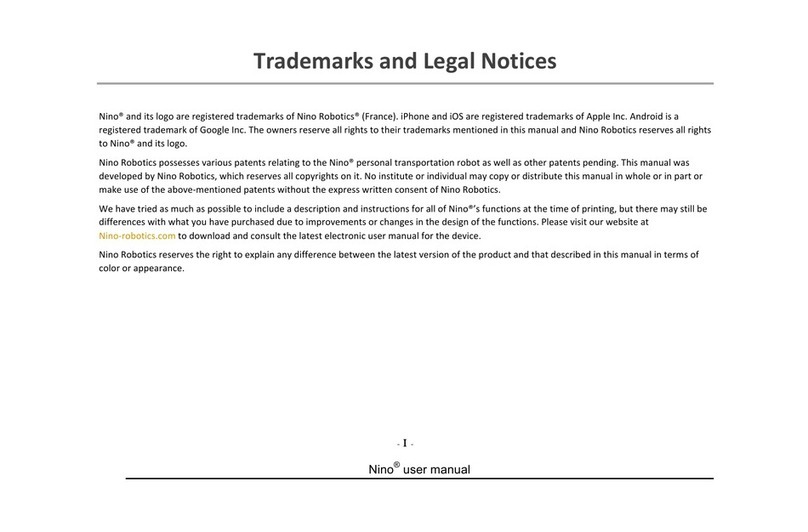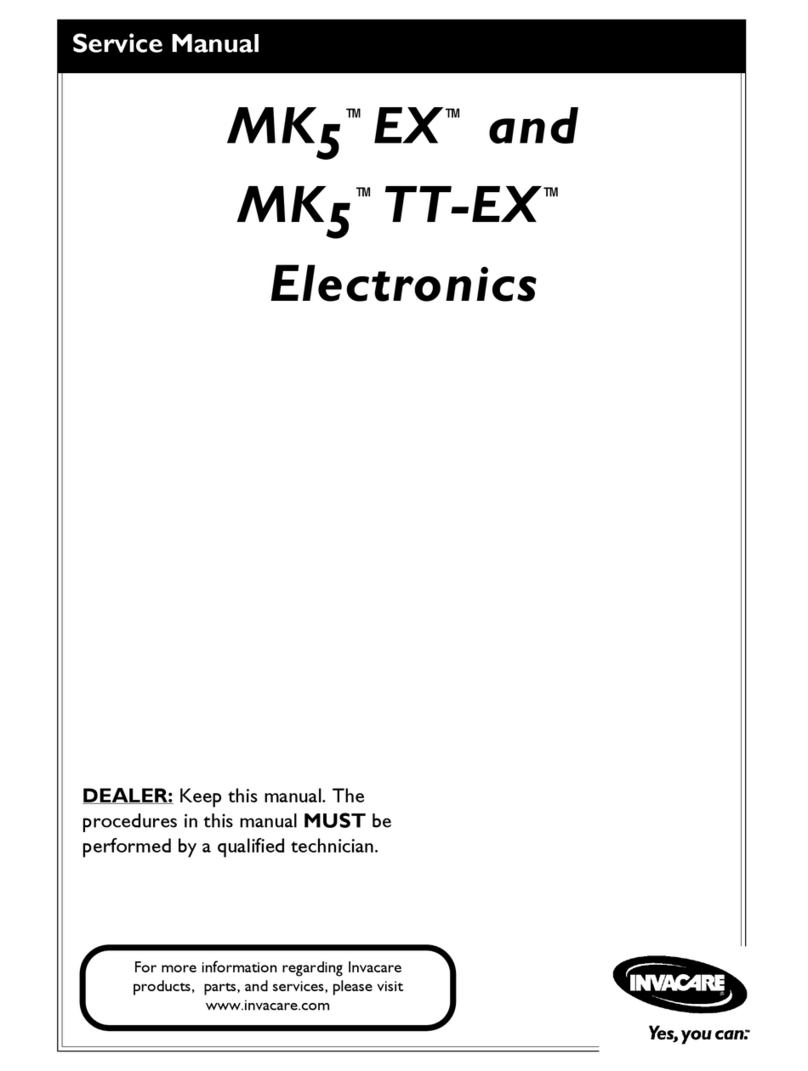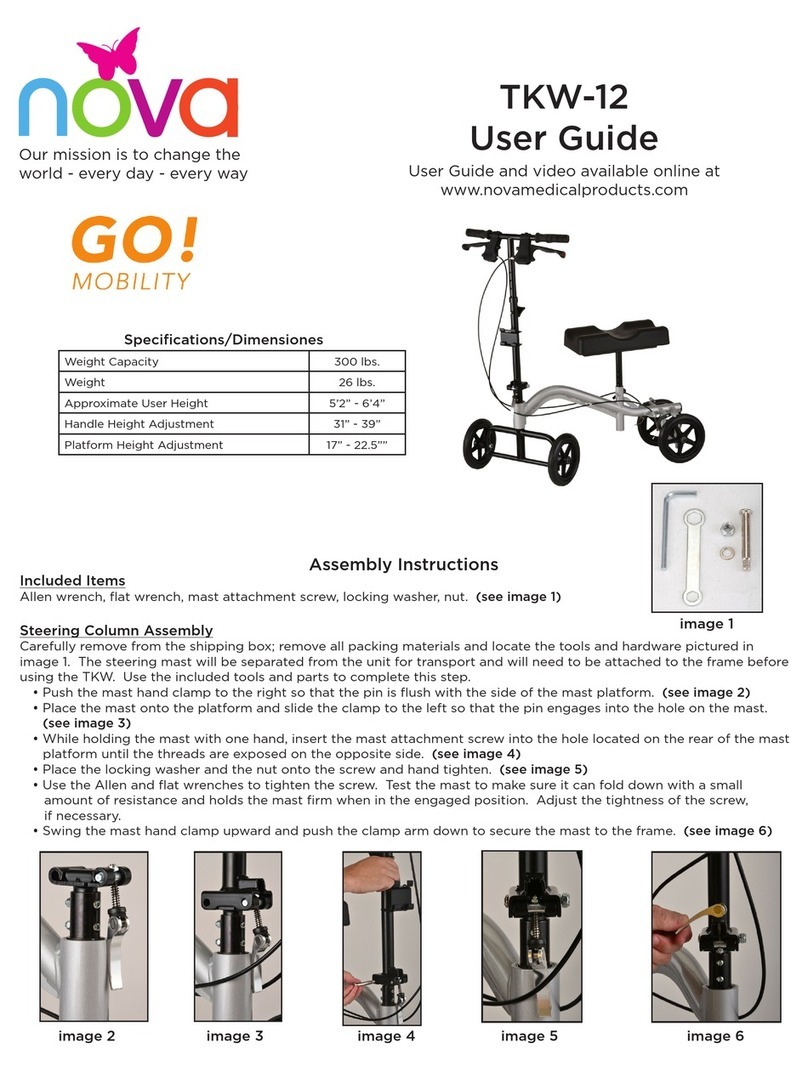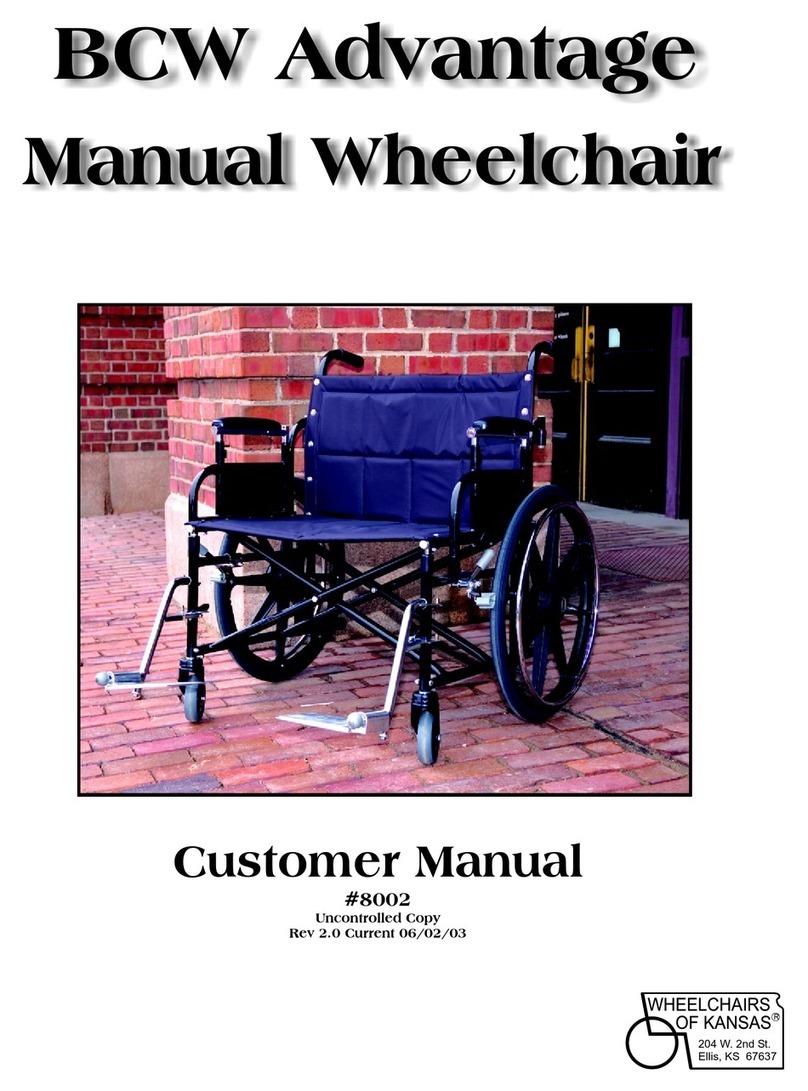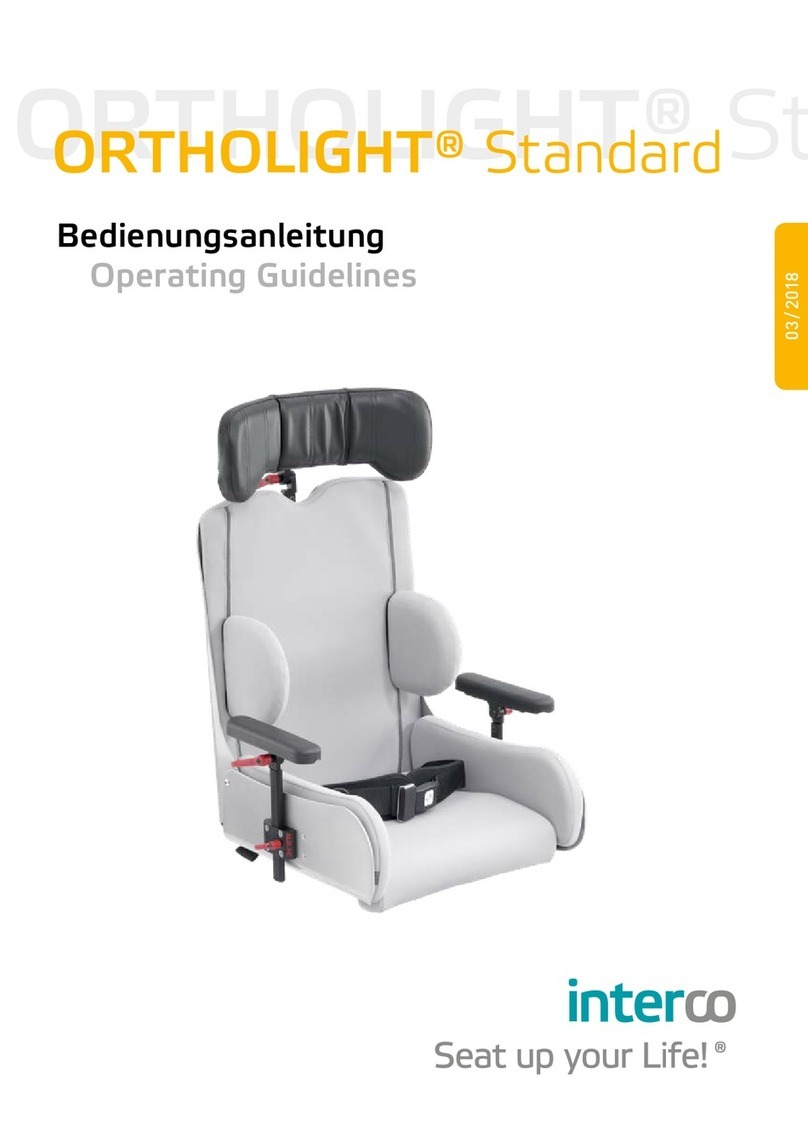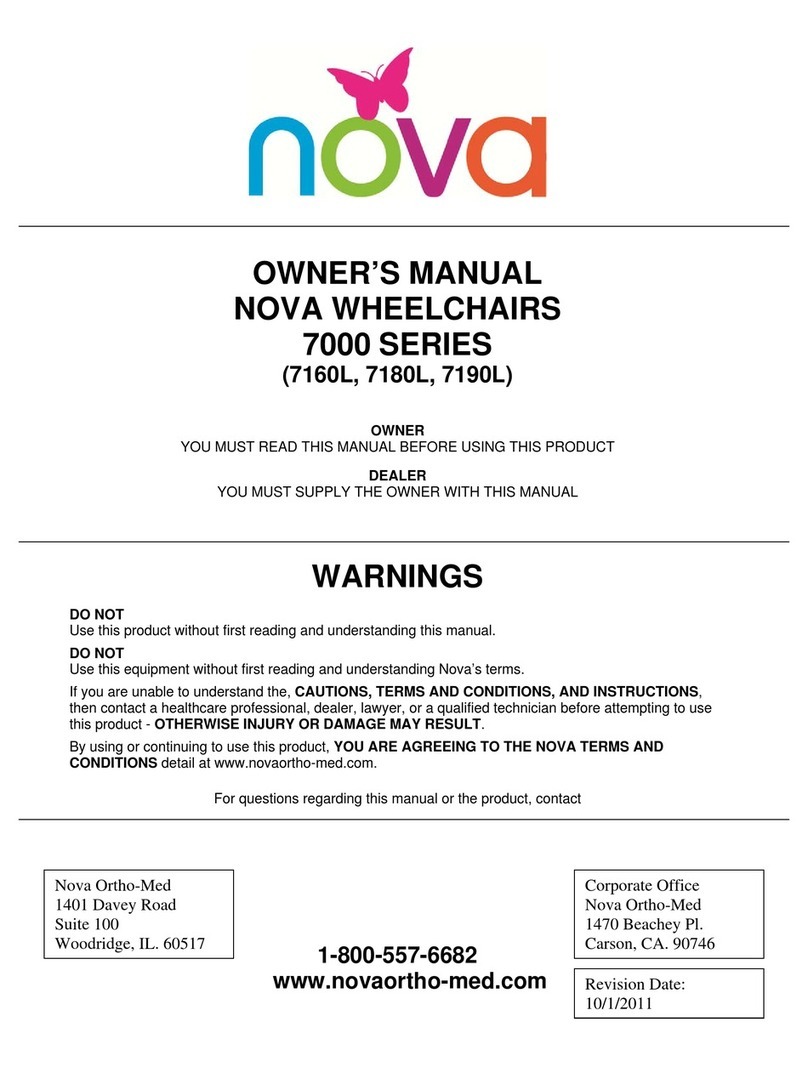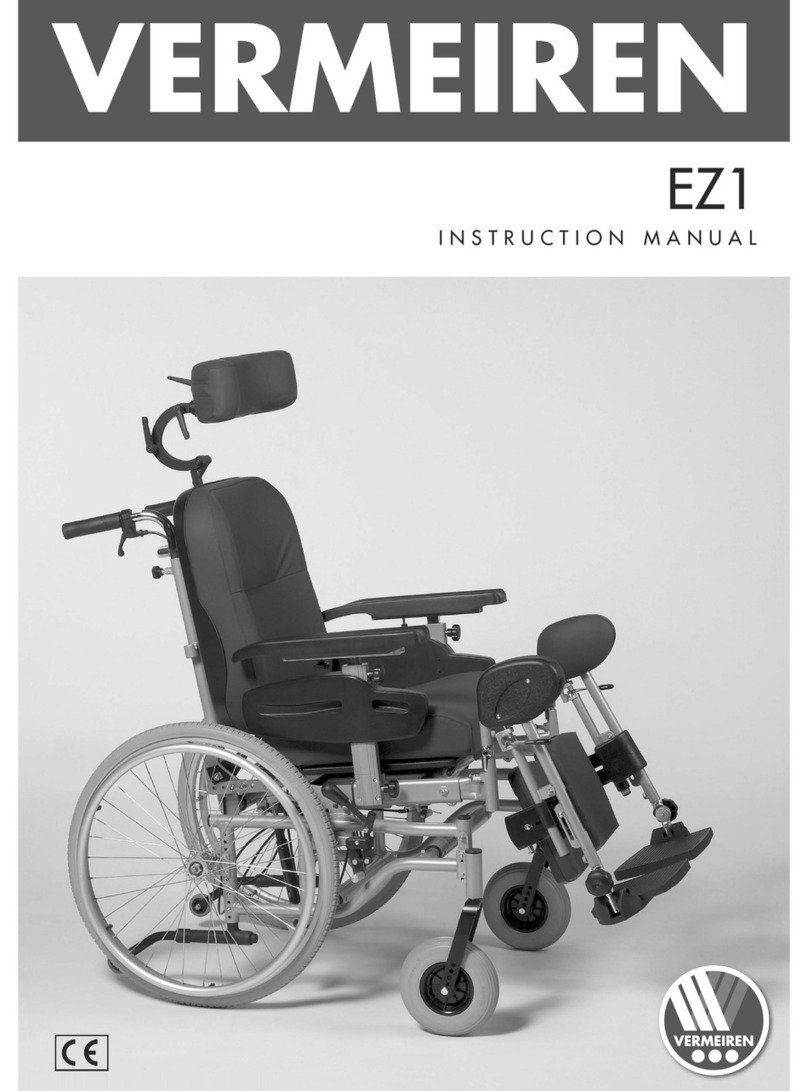●DO NOT use an escalator to move a power wheelchair between floors.
Serious bodily injury may occur.
●DO NOT operate in car lanes on roads, streets, highways, etc.
●DO NOT attempt to move up or down an incline with a water, ice or oil
film.
●DO NOT attempt to ride over curbs or obstacles. Doing so may cause
your power wheelchair to turn over and cause bodily harm and/or
damage to the power wheelchair.
●DO NOT make sharp turns, in forward or reverse, at excessive speeds.
●DO NOT attempt to lift the power wheelchair by its casings and seat.
●DO NOT attempt to lift the power wheelchair by any detachable parts
Lifting by means of any detachable parts of a power wheelchair may
result in injury to the user or damage to the power wheelchair. Please
hold onto the frame when lifting your wheelchair.
●DO NOT operate the power wheelchair until you have checked that the
surroundings are clear and that the area is safe for Travel.
●DO NOT use stand-up function on a slope.
●Please pay attention to the environment, and to keep away from the
hazard of external flame. When the user is smoking, pay attention to
safety and make sure to extinguish the fire when finished. Be alert to the
environment when someone nearby is smoking or using a cigarette
lighter, keep away from the hazard and use fire-proof cloth.
●DO NOT use parts, accessories or adapters other than those authorized
by Karma. Before attempting to sit in or exit the power wheelchair, turn
the power OFF. This will ensure that the power wheelchair will not drive.
Turn the power OFF while the wheelchair is not in use. Otherwise, injury
and/or damage to the wheelchair and surrounding property may occur.
●DO NOT connect any medical device (i.e., a ventilator, life support
machine, et cetera) to the battery. This could cause unexpected failure
of the device and the power wheelchair. KARMA specifically disclaims
responsibility to all personal injury and property damage that may occur

